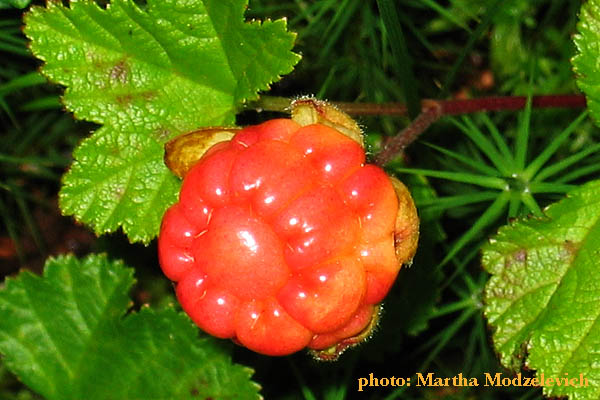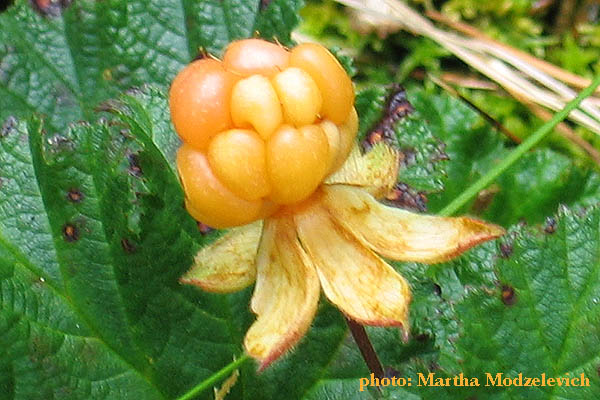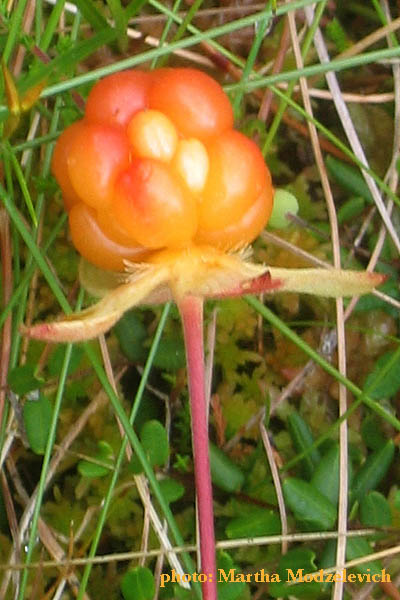
Location: Jämtland, Ragunda
| Scientific name: | Rubus chamaemorus L. | |
| Swedish name: | Hjortron, multebär, myrbär, snåtterblomma, solbär | |
| German name: | Moltebeere | |
| Nederlandse naam: | Kruipbraam | |
| English name: | Cloudberry, Knotberry, Bakeapple | Family: | Rosaceae, Rosväxter |

Location: Jämtland, Ragunda |
| Life form: | Dioecious perennial herb (rhizome system) | |
| Leaves: | Alternate; roundish to kidney-shaped; leathery, on long leafstalks; margins with blunt teeth. | |
| Flowers: | Single, white, 2-3 cm across,on a creeping rootlike stem | |
| Flowering Period: | June, July | |
| Fruits: | Consists of from 5 to 25 golden-yellow, soft and juicy drupelets, arich in vitamin C | |
| Habitat: | Bogs, marshes and wet meadows |

Location: Jämtland, Ragunda Derivation of the botanical name: Rubus, bramble, - from ruber, red, an allusion to red dye obtained from fruits of some of the species. chamaemorus, chamae, χαμαι, on the ground, a reference to the low habit, and morus.the mulberry tree, a reference to the mulberry-like fruit.
They are used to make treats such as jams, tarts, sauces, syrups, and liqueurs. 
Location: Jämtland, Ragunda |